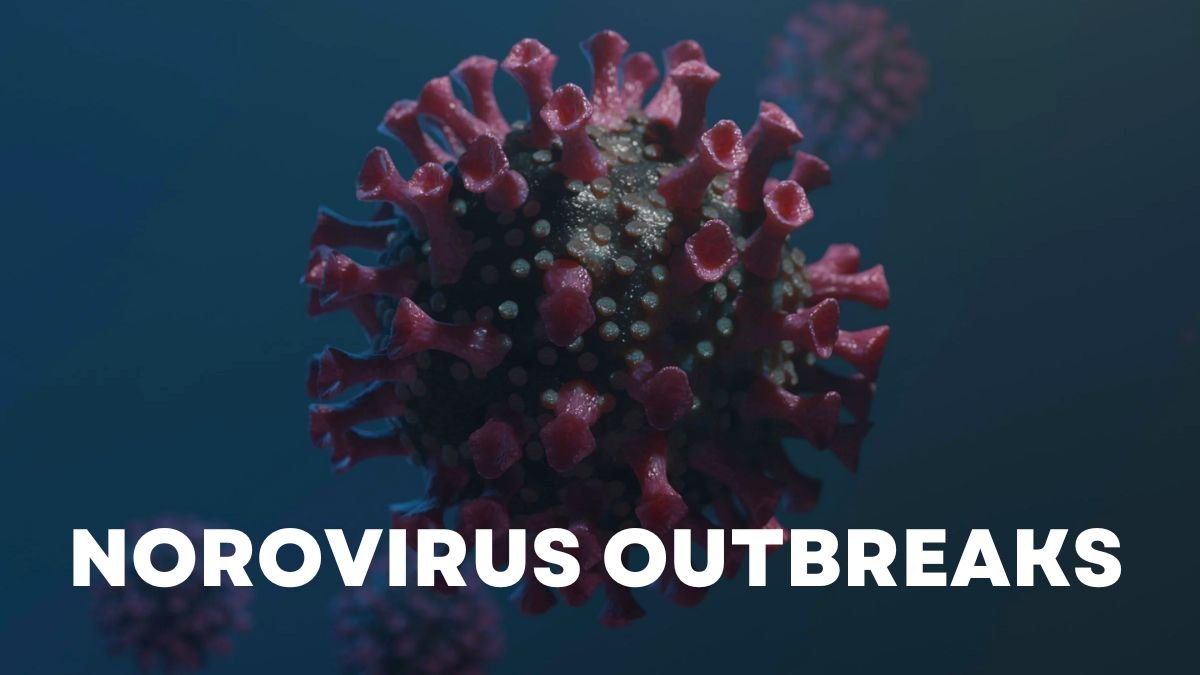
Norovirus Outbreaks Surge in the United States This Winter: What You Need to Know
The Centres for Disease Control and Prevention (CDC) have observed an increase in Norovirus outbreaks this winter in several areas of the United States. Since early December, the number of cases of this highly infectious stomach virus has been rapidly increasing, with outbreaks significantly increasing in contrast to previous years.
Rising Outbreaks: CDC Data
Compared to the 69 norovirus infections reported the week before, the CDC reported 91 outbreaks for the week of December 5. There are usually less than 65 cases in early December, so this increase is quite alarming. Health experts are keeping a careful eye on the situation as the virus spreads around the country.
The norovirus is notorious for causing vomiting, stomach pain, and sudden vomiting. It spreads quickly, particularly in settings like cruise ships, schools, nursing homes, and other public spaces where people contact closely.
Understanding Norovirus: Symptoms and Spread
According to CDC data, norovirus accounts for 58% of food-related infections each year, making it the most common cause of illness linked to food in the United States. As little as 10 viral particles can cause disease, making the virus highly contagious. Approximately 2,500 norovirus outbreaks occur year on average, with the highest frequency occurring between November and April.
Common symptoms of norovirus infection include:
- Having diarrhoea
- pain in the stomach and nausea
- fever, headache, and pain in the legs
Infection can cause major difficulties, most of patients recover without medical care. Norovirus causes approximately 900 deaths and 109,000 hospitalisations annually, mostly in those at risk like the elderly.
How Norovirus Spreads
The norovirus grows quickly in a number of ways. Direct person-to-person contact is the most frequent way of infection, particularly when sick people share food or cutlery or have intimate contact with other people. Additionally, contaminated food, water, or surfaces may pass on it. (Norovirus Outbreaks)
Most common are outbreaks in conditions where persons are confined together, like:
- Cruise ships
- Long-term care facilities
- Schools
- Jails
Because the virus may remain on surfaces for days, maintaining good hygiene and sanitation is crucial to avoiding its spread.
Who’s at Risk?
Although norovirus can infect anyone, some populations are more susceptible to serious disease, such as:
- Young children
- Older adults (aged 65 and above)
- People with weakened immune systems
Hydration from vomiting and diarrhoea is the main issue for these people, and it can cause major health issues.
Managing Symptoms: What to Do If You’re Sick
Despite the lack of a specific treatment for norovirus, people who get sick ought to focus on drinking enough water to avoid becoming dehydrated. Drinking liquids including water, oral water retention treatments, and clear broths is advised by the CDC. Steer clear of alcohol, tea, and coffee as these might exacerbate dehydration. (Norovirus Outbreaks)
Signs of dehydration include:
Decreased urination
Mouth dryness
Fatigue and lightheadedness
Unusual sleepiness, fussiness, and crying with little to no tears in youngsters
If signs of dehydration worsen, get help right away.
For more updates on our Website.
Preventive Measures: How to Protect Yourself
Maintaining proper cleanliness and hygiene is crucial to stopping the norovirus from spreading. Particularly before meals and after using the restroom, the CDC advises regular and thorough handwashing with soap and warm water for at least 20 seconds. Handwashing is still the most effective way to avoid norovirus because hand sanitisers are less effective.
Along with practicing good hand hygiene, sanitising high-touch items such as light switches, doorknobs, and counters can help stop the virus from spreading, particularly in social environments like nursing homes and schools.
You may greatly lower your chance of contracting norovirus and stopping its spread this winter by being watchful and taking these precautions.
What is norovirus?
The highly infectious norovirus virus is responsible for stomach cramps, diarrhoea, and vomiting. In the US, it is one of the main causes of foodborne illness.
How does norovirus spread?
Person-to-person contact or infected food, water, or surfaces can transmit norovirus, particularly in crowded settings like nursing homes, schools, and cruise ships.
What are the symptoms of norovirus?
Sudden vomiting, diarrhoea, nausea, headaches, body aches, and fever are among the symptoms. It often lasts one to three days and begins 12 to 48 hours after exposure.
Who is at risk for severe illness from norovirus?
Complications, including dehydration, are more likely to occur in young children, elderly persons (65+), and those with compromised immune systems.
How can I prevent norovirus infection?
Avoid sharing food or dishes with infected people, disinfect high-touch surfaces, and thoroughly wash your hands with soap and water for at least 20 seconds.
Is there any treatment for norovirus?
The norovirus does not have a specific therapy. Drinking water or rehydration solutions should be the main focus in order to stay hydrated. Seek medical attention if your symptoms get worse.
How long does norovirus last?
The normal duration of norovirus symptoms is one to three days. Dehydration can be an issue, particularly for those who are more susceptible, although most people recover without the need for medical treatment.
Can norovirus be treated with antibiotics?
Antibiotics are ineffective against norovirus since it is a viral infection. Recovery depends on symptom control and rehydration.
